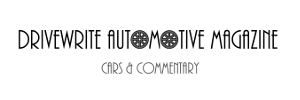|
By accessing or using The Crittenden Automotive Library™/CarsAndRacingStuff.com, you signify your agreement with the Terms of Use on our Legal Information page. Our Privacy Policy is also available there. |

How Hard Can It Be?
|
|---|
|
|
How Hard Can It Be?
Geoff Maxted
DriveWrite
July 4, 2013
We Brits live on a relatively small island. Going from place to place has never been easier. There are many road signs, for example. In Wales, you even get to read everything twice - once in Welsh and once in English. Why? If Welsh people want to speak Welsh then let them. If we go to France we don ’t expect the French to double up on the signage, do we? Obviously they should, but you know what they’re like. The main problem with the Welsh system is that the driver’s eye is automatically drawn to the foreign language bit first. By the time this has been dealt with the sign has gone and you‘re none the wiser.
It is pretty hard to get lost in the UK and yet many people manage it with ease. In the olden days of the 20th Century, drivers had concertina-like things made of paper called ‘maps’ and they used these to travel the nation. In these technological times we favour devices running on electricity to tell us where to go, utilising the manifold mysteries of satellite navigation, and jolly accurate they are too.
Nevertheless some people contrive to misplace themselves and then go on at some length blaming their sat-nav for their problems. Not so, you poor misguided souls. It is because you have failed to update your device. Usually software upgrades are free and serve to improve the performance of the unit. Certainly it costs to update built-in devices, but that is the drawback of having it in your dashboard. With screen mounted devices, it is much easier.
All manufacturers sell map updates. Some offer lifetime updates for a one-off fee. This is more of a bargain than it looks. A properly cared for and updated sat-nav can and does last for years. They are very reliable and quite versatile. For example, if you have an abiding fear of ferries then you can opt to avoid them. Don’t like driving on motorways or paying tolls? Then give them a miss. It’s easy. Yet how many drivers arrive hopelessly on a road ending at a river to find a rusting hulk of a ferry with a grimy, slippery ramp to negotiate and a fee to pay?
How do folk manage to make these errors? If your device tells you to turn onto a muddy rut-filled track, it probably means you’ve set the device to ‘fastest route’; but this doesn’t mean you have to slavishly obey. It’s just daft. Sat-nav’s are great but they can’t establish local conditions if the road is question is public. To a sat-nav a road is just a road. Common sense should tell you to drive on and let Serena (or whichever voice you’ve chosen) calmly adjust your route in an admonishing tone of voice.
In short, if you don’t like the look of it, then don’t do it! It’s really that simple. Your sat-nav is a reliable tool only as long as you update it and use it properly. The alternative is likely to be stopping and asking an old man of the Lake District - in a smock and with a piece of straw hanging from his mouth - if he knows the quickest way to Kensington High Street as you‘re late for an appointment.



















